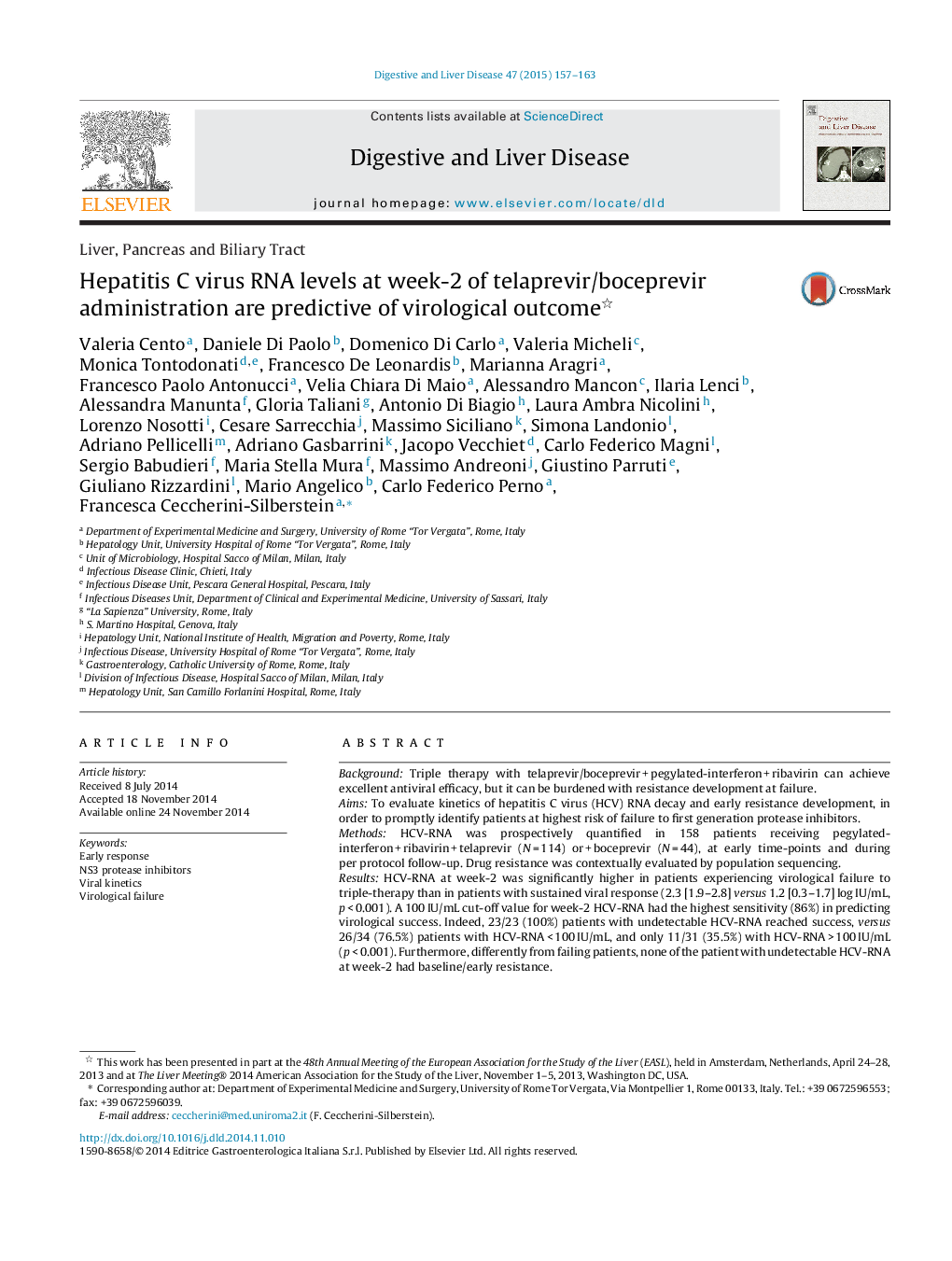| Article ID | Journal | Published Year | Pages | File Type |
|---|---|---|---|---|
| 6088654 | Digestive and Liver Disease | 2015 | 7 Pages |
BackgroundTriple therapy with telaprevir/boceprevir + pegylated-interferon + ribavirin can achieve excellent antiviral efficacy, but it can be burdened with resistance development at failure.AimsTo evaluate kinetics of hepatitis C virus (HCV) RNA decay and early resistance development, in order to promptly identify patients at highest risk of failure to first generation protease inhibitors.MethodsHCV-RNA was prospectively quantified in 158 patients receiving pegylated-interferon + ribavirin + telaprevir (N = 114) or + boceprevir (N = 44), at early time-points and during per protocol follow-up. Drug resistance was contextually evaluated by population sequencing.ResultsHCV-RNA at week-2 was significantly higher in patients experiencing virological failure to triple-therapy than in patients with sustained viral response (2.3 [1.9-2.8] versus 1.2 [0.3-1.7] log IU/mL, p < 0.001). A 100 IU/mL cut-off value for week-2 HCV-RNA had the highest sensitivity (86%) in predicting virological success. Indeed, 23/23 (100%) patients with undetectable HCV-RNA reached success, versus 26/34 (76.5%) patients with HCV-RNA < 100 IU/mL, and only 11/31 (35.5%) with HCV-RNA > 100 IU/mL (p < 0.001). Furthermore, differently from failing patients, none of the patient with undetectable HCV-RNA at week-2 had baseline/early resistance.ConclusionsWith triple therapy based on first generation protease inhibitors, suboptimal HCV-RNA decay at week-2 combined with early detection of resistance can help identifying patients with higher risk of virological failure, thus requiring a closer monitoring during therapy.
